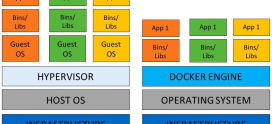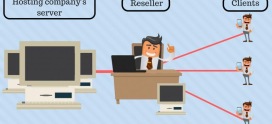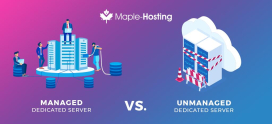
7 Smart Ways to Boost Your WordPress Performance Today
In today’s fast-paced digital landscape, website performance is paramount. If you’re running a WordPress site, you know that speed and efficiency can significantly influence user experience, SEO rankings, and overall success. But fear not—boosting your WordPress performance doesn’t have to be an overwhelming task. In this listicle, we’ll explore 7 smart and practical strategies you can implement today to enhance your site’s functionality and speed. From simple optimizations to advanced tweaks, each item will equip you with actionable insights that you can apply immediately, ensuring your website not only meets but exceeds expectations. Get ready to transform your WordPress experience and keep your audience engaged!
1) Optimize Your Images: Compressing and properly sizing images can significantly reduce your site’s load time, ensuring that visuals enhance rather than hinder user experience
Images are a vital component of any website, but they can also be a significant factor in slowing down your page load times. To ensure your visuals contribute positively to user experience, start by implementing image compression techniques. Various plugins like Smush or EWWW Image Optimizer can automatically compress images during upload without sacrificing quality. This process reduces file size, enabling images to load faster while maintaining their sharpness and clarity. Additionally, consider using formats like WebP which offer superior compression for web images without losing visual fidelity.
Properly sizing images before uploading is equally essential. Avoid using oversized images that require unnecessary bandwidth. Use the following tips to effectively manage image sizes:
- Determine Display Size: Always consider how large the image will be displayed and upload a version that matches or is slightly larger.
- Use Responsive Images: Implement HTML attributes like
srcsetandsizesto serve different image sizes to different devices, ensuring optimal loading times on mobiles, tablets, and desktops. - Lazy Loading: Enable lazy loading to ensure that images only load when they are visible on the user’s screen, greatly improving the initial load time.

2) Utilize Caching Plugins: Implementing caching solutions can serve your pages faster by storing static versions and decreasing load on your server, resulting in a smoother browsing experience
Implementing caching solutions can radically transform your WordPress site’s performance. By storing static versions of your web pages, caching plugins help deliver content to users without fetching it from the server each time. This not only speeds up load times but also mitigates the load on your server resources during peak traffic. Here are some **key benefits** of using caching plugins:
- Faster Load Times: Cached pages reduce the wait time for users, enhancing their browsing experience.
- Decreased Server Load: By serving up cached content, your server handles fewer requests, which is particularly beneficial during high traffic periods.
- Improved Core Web Vitals: A more responsive site directly contributes to better SEO and user engagement metrics.
To get started, consider popular caching plugins like WP Super Cache or W3 Total Cache. Configuring these plugins is often straightforward, as they come with preset settings that cater to most sites. Below is a simple table showcasing basic features you might find in popular caching plugins:
| Plugin Name | Features | Best For |
|---|---|---|
| WP Super Cache | Simple setup, Static file serving | Beginners |
| W3 Total Cache | Comprehensive caching, CDN support | Advanced users |
Utilizing caching plugins not only accelerates page delivery but also provides the backbone for a seamless user experience. With a little investment of time in their configuration, you can keep visitors coming back, all while optimizing your server’s performance.

3) Choose a Fast-Performing Host: Selecting a web hosting provider that specializes in WordPress can dramatically impact your site speed, providing better resources and support for your performance needs
When choosing a web host for your WordPress site, focus on those that prioritize speed and performance. **Managed WordPress hosting providers** often offer optimized servers specifically tailored to run WordPress sites efficiently. This means you’ll benefit from features such as automatic updates, enhanced security measures, and specialized caching, all contributing to improved load times. Additionally, look for a host that boasts a **Content Delivery Network (CDN)** integration, which distributes your site’s content across multiple servers globally, ensuring that your visitors experience quicker access, no matter their location.
To assist in making an informed decision, here are some key aspects to consider when evaluating hosting options:
| Hosting Feature | Importance |
|---|---|
| SSD Storage | Superior speed compared to traditional HDD storage. |
| Scalable Resources | Easily accommodate traffic spikes without performance issues. |
| Expert Support | Immediate assistance from teams familiar with WordPress intricacies. |
In addition to these features, don’t underestimate the impact of data center location and uptime guarantees. A hosting provider with a data center closer to your primary audience can dramatically reduce latency, resulting in faster load times. Likewise, choose a provider that offers at least **99.9% uptime**—this ensures that your website remains accessible to users at all times, which is vital for maintaining a positive user experience and optimal site performance.

4) Streamline Your Plugins: Regularly reviewing and deactivating unnecessary plugins can lighten your site’s load, reducing conflicts and improving overall efficiency without sacrificing functionality
Managing your WordPress site can sometimes feel like juggling chainsaws, especially when it comes to plugins. Each addition promises to enhance functionality, but over time, these can accumulate, leading to slow loading times and potential conflicts. To achieve a well-oiled machine, conduct regular audits on your plugins. Start by identifying the ones that are essential to your site’s core functions and consider the benefits versus drawbacks of each additional tool. If a plugin hasn’t seen regular use or hasn’t provided the value you anticipated, it’s time to deactivate or uninstall it. Remember, fewer plugins mean less strain on your server resources, which equates to faster performance.
After reviewing your plugins, consider organizing them into categories to easily identify which ones are redundant or overlapping in functionality. Use a simple table to track their purpose, last usage date, and potential alternatives:
| Plugin | Purpose | Last Used | Alternative |
|---|---|---|---|
| SEO Yoast | SEO Optimization | Last Month | Rank Math |
| Contact Form 7 | Form Creation | 3 Months Ago | Ninja Forms |
| W3 Total Cache | Caching | Weekly | WP Super Cache |
By identifying underused plugins and potential alternatives, you ensure that your site remains lightweight and responsive. Each decision to deactivate unnecessary plugins can significantly enhance your site’s speed and reliability, enabling a smoother experience for your visitors while maintaining the functionality you need to keep your site running effectively.
To Conclude
And there you have it—seven smart strategies to elevate your WordPress performance and provide a seamless experience for your visitors. By implementing these tips, you not only enhance page loading speeds and improve user engagement but also pave the way for better search engine rankings and increased site reliability. Remember, a well-optimized website isn’t just about keeping your visitors happy; it’s about ensuring your digital presence thrives in an increasingly competitive landscape.
As you embark on this optimization journey, keep in mind that performance is an ongoing process. Regularly assess your site, stay updated on emerging technologies, and don’t hesitate to revisit this list as a handy reference. Your website’s performance is not only a reflection of your dedication but a gateway to building lasting connections with your audience. So, roll up your sleeves, put these strategies into action, and watch your WordPress site soar to new heights!









